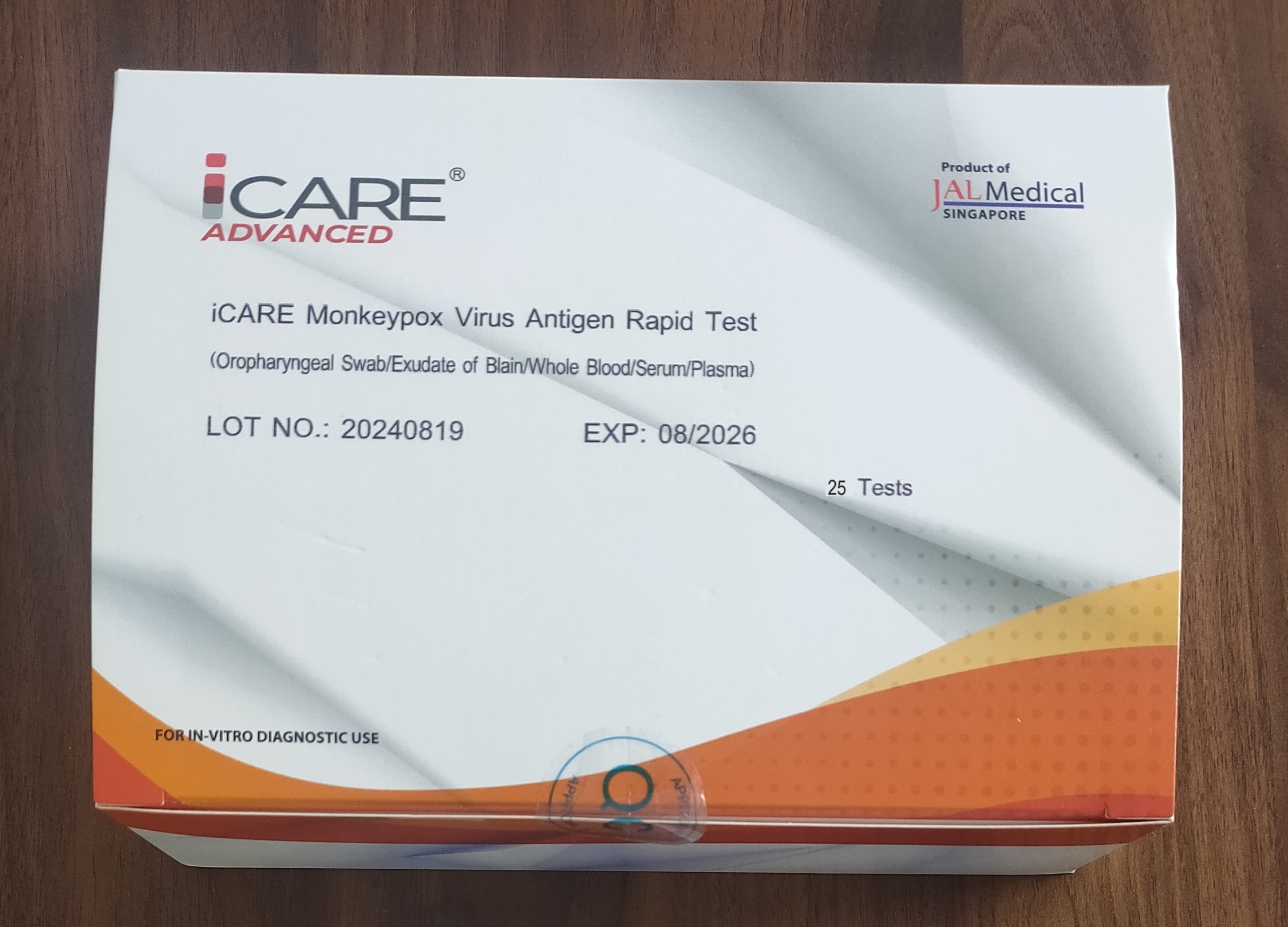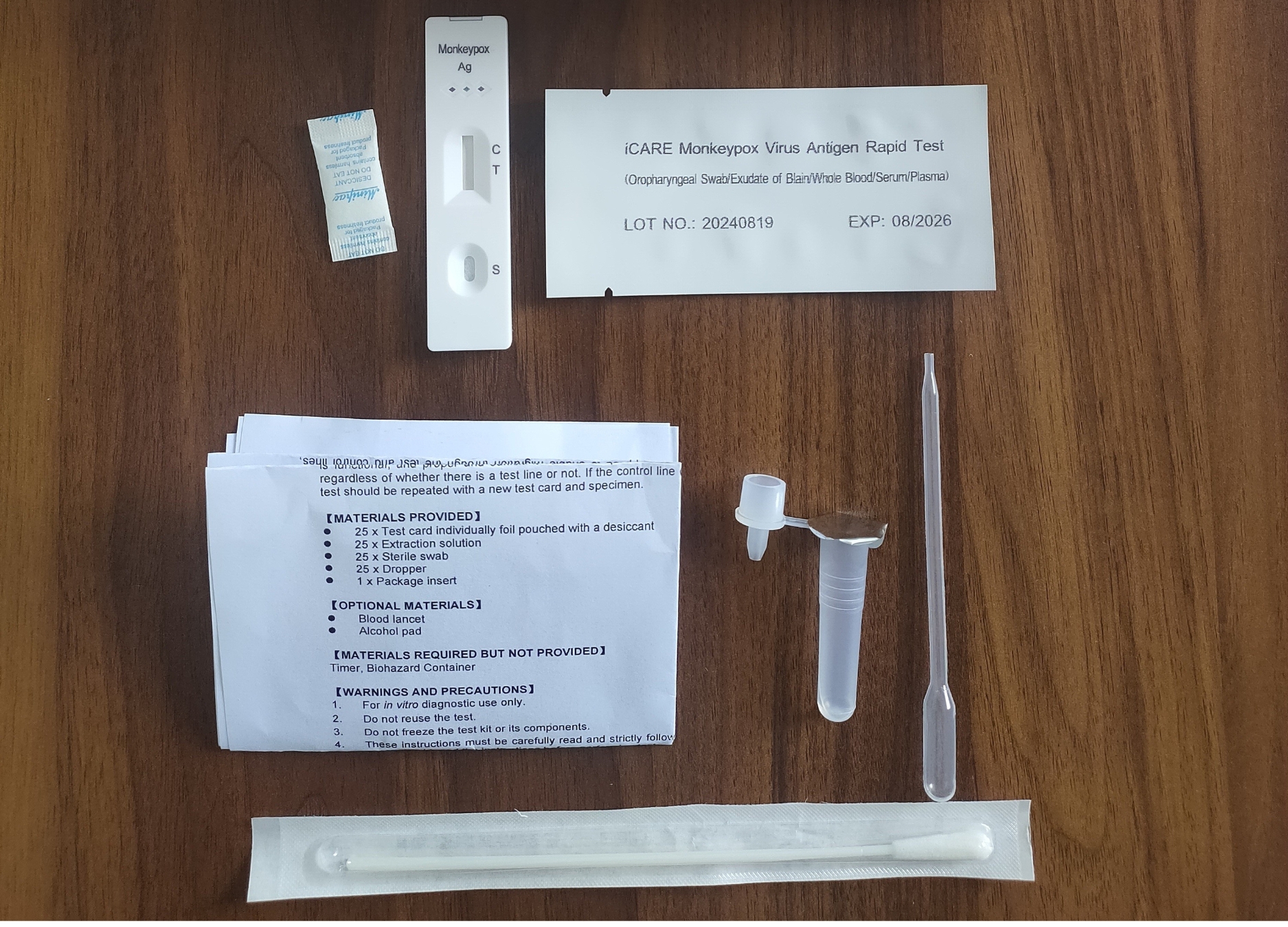Table of Contents
As the world faces the potential spread of the Monkeypox virus, countries like Vietnam must prepare to manage potential outbreaks. Early and accurate diagnosis of the virus is essential to control its spread. However, several barriers complicate effective testing in Vietnam, including test sensitivity, compatibility of samples and medical screening protocols. These issues can delay timely diagnosis and contribute to the spread of the virus, especially during outbreaks.
This article delves into these challenges, exploring how Monkeypox virus rapid tests, sensitivity issues and sample compatibility impact testing decisions in Vietnam and how improvements in these areas can lead to more effective detection and prevention.
Preventing False Negatives: Why Test Sensitivity Matters for Monkeypox Detection?
A critical issue in diagnosing Monkeypox is ensuring that tests are sensitive enough to detect the virus during its early stages. If a test is not sensitive enough, it may fail to detect the virus, leading to false negatives. This is a serious concern because individuals with undiagnosed infections may unknowingly spread the virus to others.
Understanding Test Sensitivity
Test sensitivity is the ability of a diagnostic tool to correctly identify those who have the disease. For Monkeypox virus, high sensitivity is crucial to ensure that early cases are identified and isolated quickly. Low sensitivity means that early cases might go undetected, allowing the virus to spread further, particularly in high-risk areas like Hanoi or Ho Chi Minh City, where large populations and increased international travel raise the risk of outbreaks.
Improving Sensitivity is vital for controlling the outbreak. More accurate tests can help healthcare professionals identify Monkeypox more reliably, minimizing the chances of missing infected individuals. This is important for preventing larger outbreaks that could overwhelm health systems.


One Size Doesn’t Fit All: The Importance of Sample Compatibility
Effective testing also depends on sample compatibility-that is, the ability of a test to work with various types of biological samples. Monkeypox can be detected in a variety of samples, such as skin lesions, blood and respiratory samples. However, not all tests are compatible with all sample types, which can create challenges in diagnosing the virus, especially if only one sample type is collected.

Types of Samples for Testing
- Lesion Samples: The characteristic Monkeypox rash is often the first visible symptom and skin lesion samples can be used to confirm the presence of the virus. However, collecting these samples can be difficult, especially if the rash is not present or is in an atypical location.
- Blood Samples: Blood tests can also help diagnose Monkeypox, but they are less commonly used due to the need for more invasive procedures. These tests require more specialized equipment and can take longer for results.
- Respiratory Samples: The virus can also be present in respiratory secretions, particularly in the early stages of infection. Collecting these samples requires a specific protocol and might not always be available in all medical settings.
Challenges with Sample Compatibility
In Vietnam, especially in rural areas like Vinh and Da Nang, the availability of equipment to handle various sample types can be limited. Without proper training or resources, healthcare workers may not collect the right type of sample, leading to delayed or inaccurate diagnoses. Additionally, if a Monkeypox test is only effective with certain types of samples, some infected individuals may not be diagnosed properly.
Ensuring that Monkeypox virus test can work across multiple sample types is vital for more comprehensive testing. This allows for accurate detection no matter how the virus presents in an individual patient.
The Role of Medical Screening in Effective Monkeypox Testing
Beyond the tests themselves, effective Monkeypox testing depends heavily on medical screening protocols. These protocols include the ability of healthcare providers to recognize the early signs of Monkeypox, such as the rashes or conjunctivitis, which may overlap with symptoms of other illnesses.
Challenges in Screening
Symptoms of Monkeypox can be similar to those of other viral diseases, such as chickenpox, measles or dengue. This can complicate the diagnosis, especially if healthcare providers are not trained to distinguish between these conditions. In cities like Ho Chi Minh City, where multiple infectious diseases may be circulating, it is crucial to have clear medical guidelines and protocols to ensure that Monkeypox symptoms are correctly identified.

Improving Screening Protocols
To enhance diagnostic accuracy, medical professionals must be trained to recognize the specific signs of Monkeypox, even when classic symptoms are not immediately visible. Integrating Monkeypox virus rapid tests into medical screening practices is also essential. With rapid tests, healthcare workers can quickly confirm suspicions and isolate patients, preventing the spread of the virus.
In high-risk regions, where an outbreak might occur, ensuring that Monkeypox virus rapid tests kit are available at healthcare facilities is critical for early detection. Improving medical screening and integrating it with diagnostic tests can help in controlling outbreaks more effectively.
Conclusion
Effective testing is the cornerstone of controlling Monkeypox outbreaks in any country, including Vietnam. The barriers of test sensitivity, sample compatibility and medical screening can significantly hinder timely and accurate diagnosis, allowing the virus to spread undetected.
In Vietnam, improving the sensitivity of Monkeypox virus rapid tests is vital to reduce false negatives. Expanding the sample compatibility of tests to ensure they can detect the virus in a variety of sample types-whether blood, skin lesions or respiratory secretions-will improve diagnostic accuracy. Additionally, integrating Monkeypox testing into medical screening practices will help healthcare providers quickly identify and isolate cases, preventing widespread outbreaks.
By overcoming these barriers, Vietnam can improve its response to potential Monkeypox outbreaks and protect public health more effectively.
FAQs
What are the main challenges in Monkeypox testing in Vietnam?
The main challenges include test sensitivity, which can lead to false negatives, sample compatibility, as tests may not be effective with all sample types and medical screening, which may not always recognize the early signs of Monkeypox.
Why is test sensitivity important for Monkeypox diagnosis?
High test sensitivity ensures that Monkeypox is detected in the early stages of infection, even when symptoms are not yet visible. Low sensitivity may result in undiagnosed cases, which can spread the virus further.
What types of samples are used for Monkeypox virus testing?
Monkeypox can be detected in skin lesion samples, blood samples and respiratory samples. The choice of sample depends on the stage of infection and the available resources.
How can medical professionals improve Monkeypox diagnosis?
Medical professionals can improve Monkeypox diagnosis by following clear screening protocols and integrating Monkeypox virus rapid tests into the diagnostic process. Early recognition of symptoms and timely testing are key to controlling outbreaks.
How do rapid pregnancy detection kits relate to Monkeypox testing?
While rapid pregnancy detection kits are used for pregnancy tests, Monkeypox virus rapid tests serve a different purpose by detecting the virus. However, both types of tests are important tools for early detection in their respective fields.






